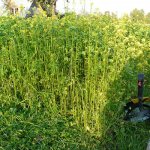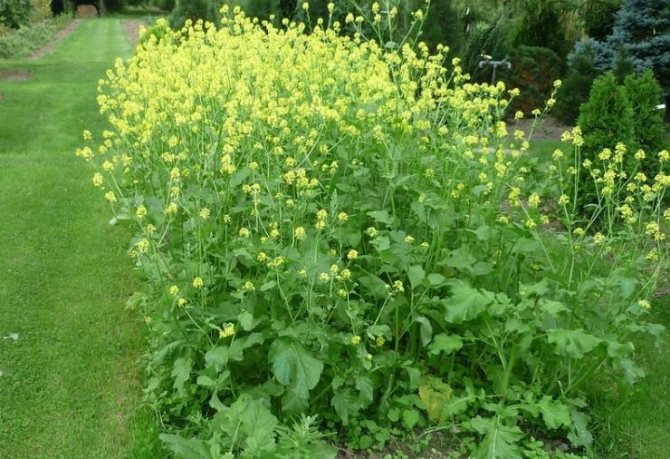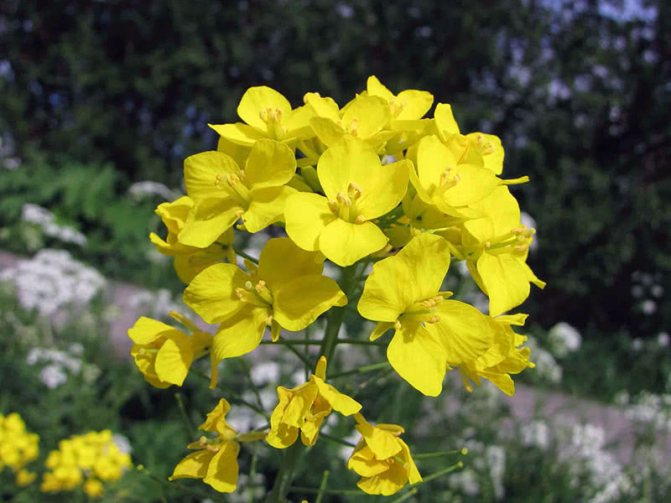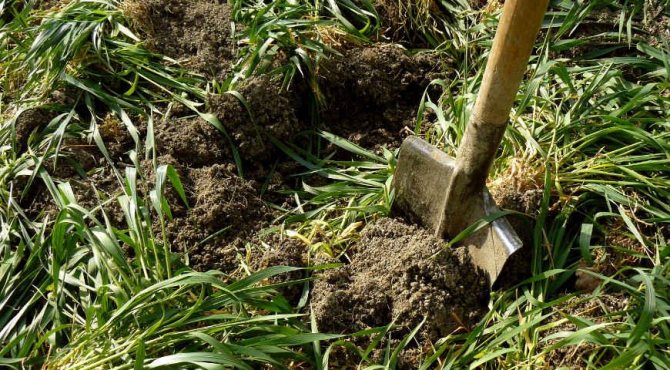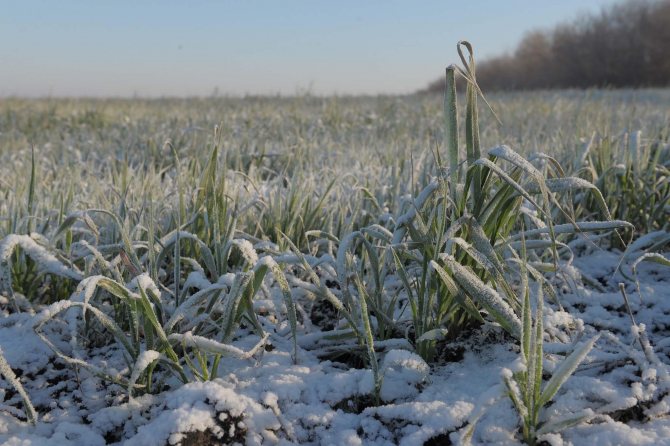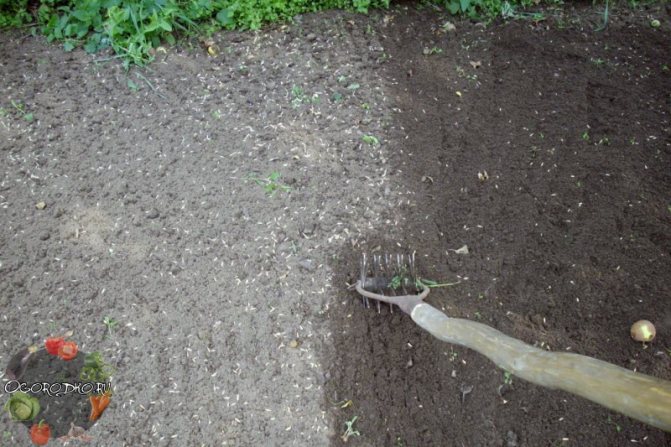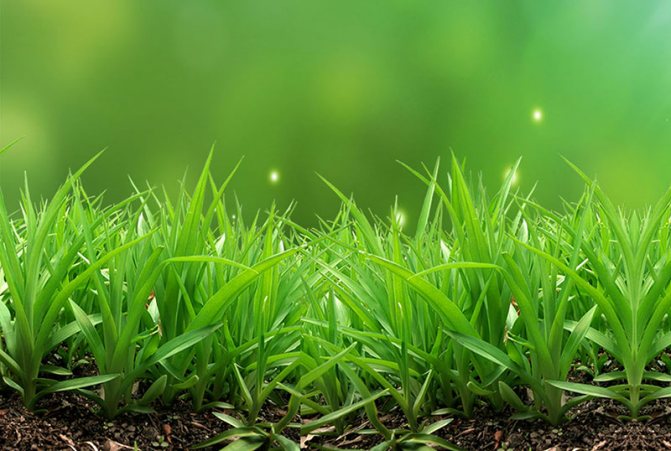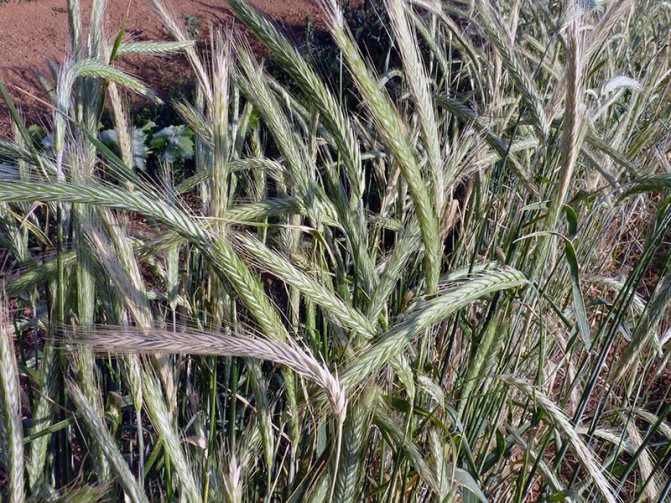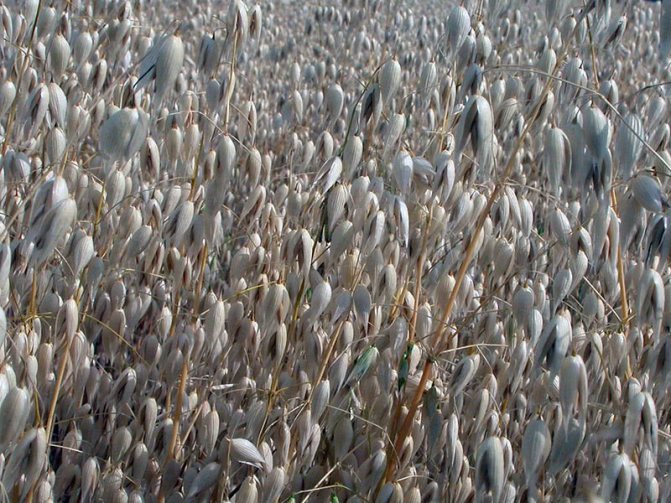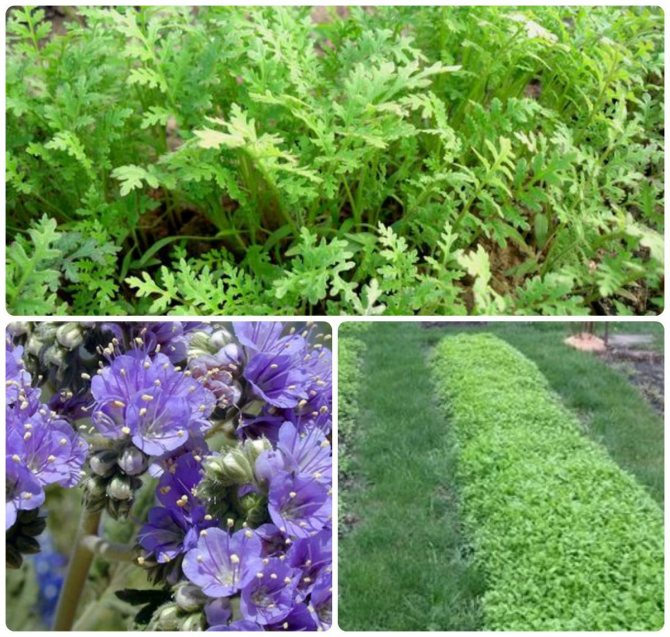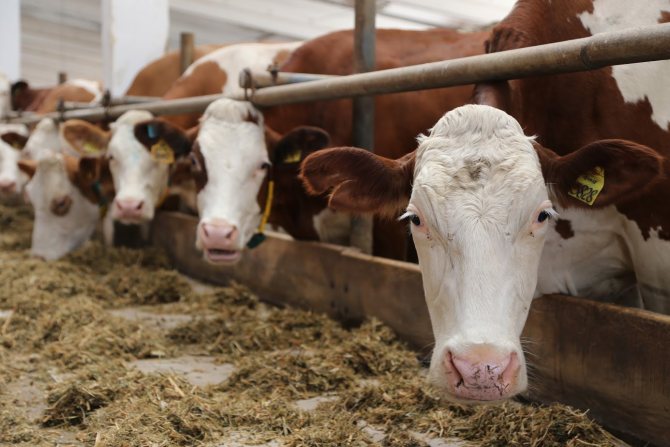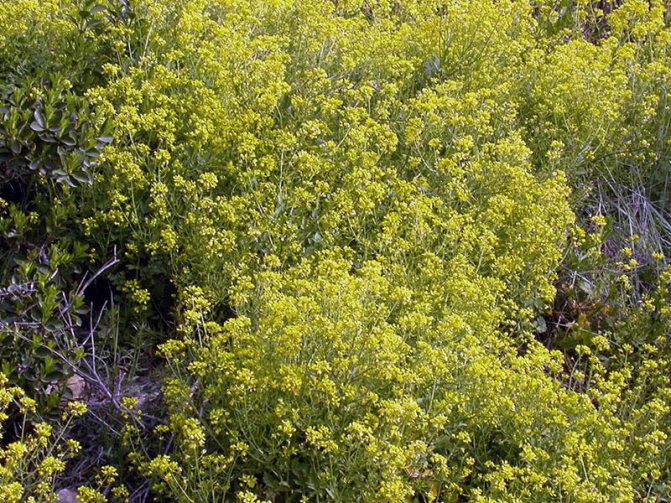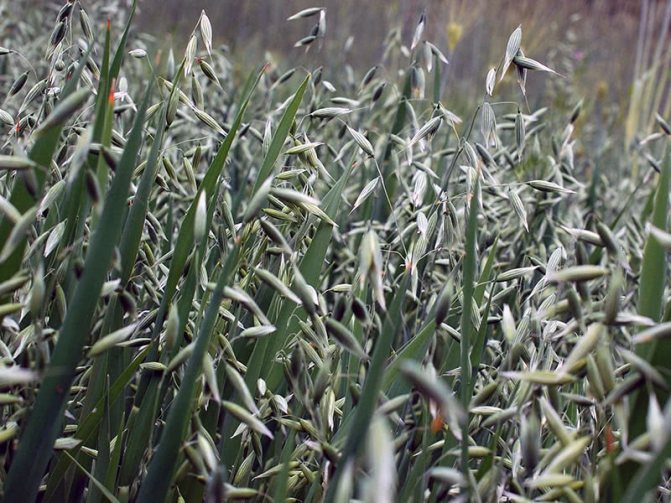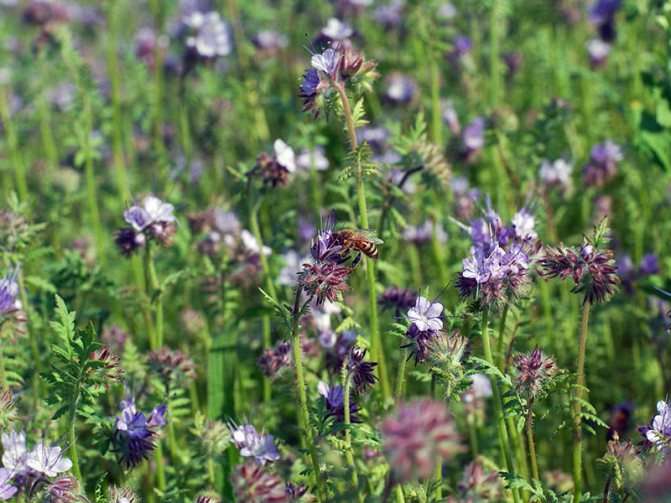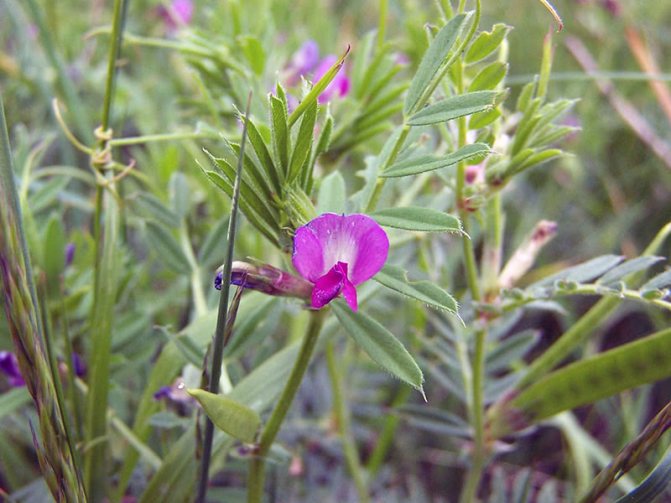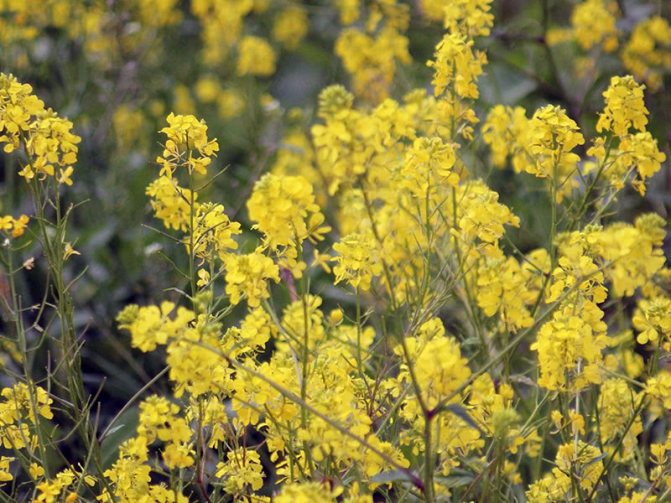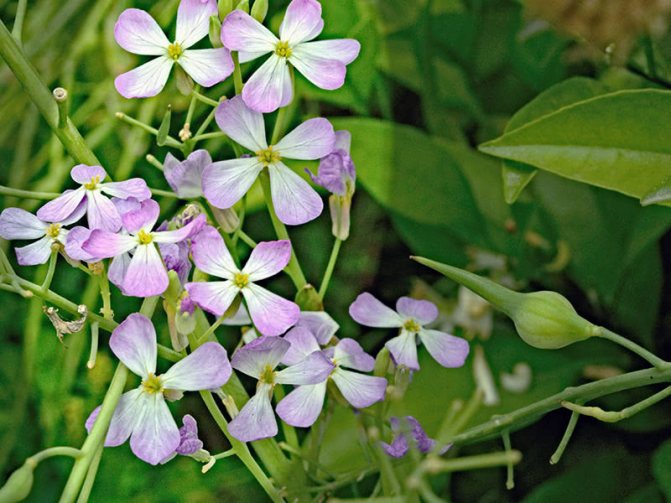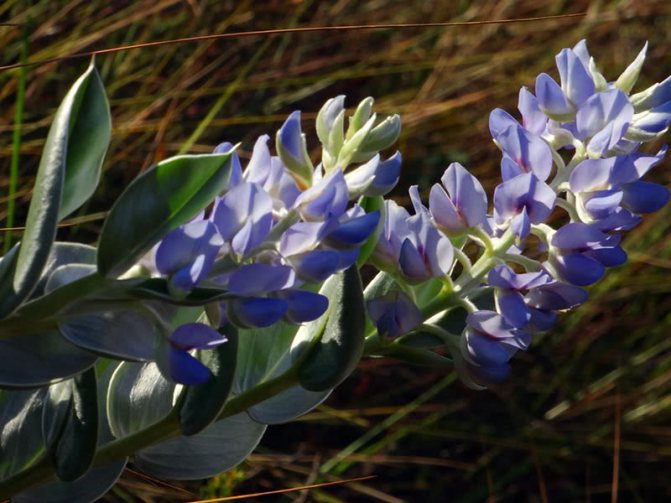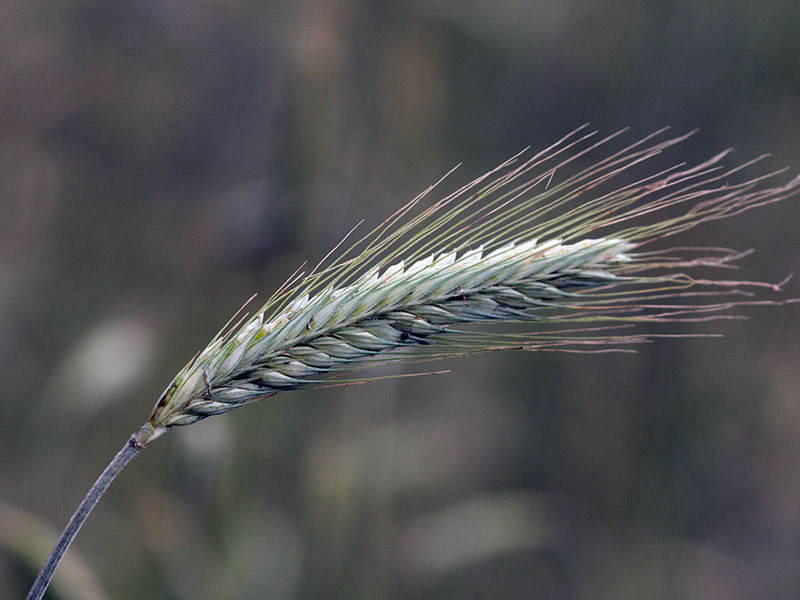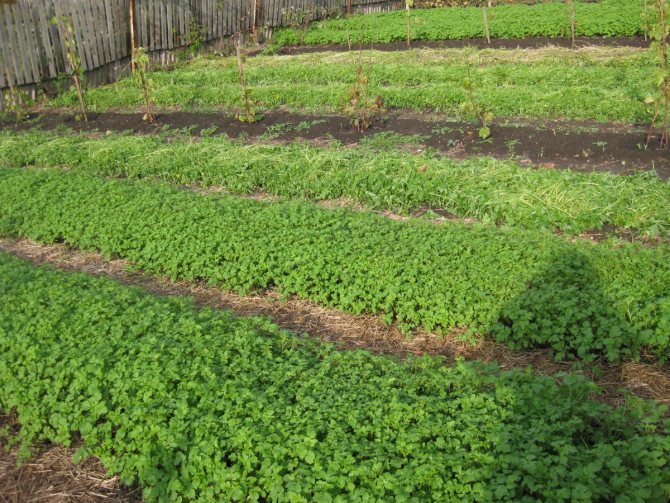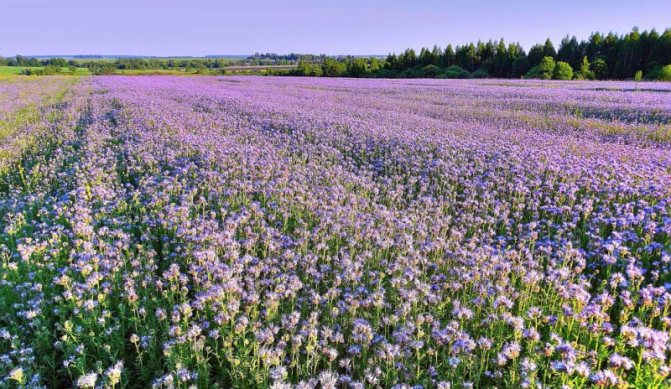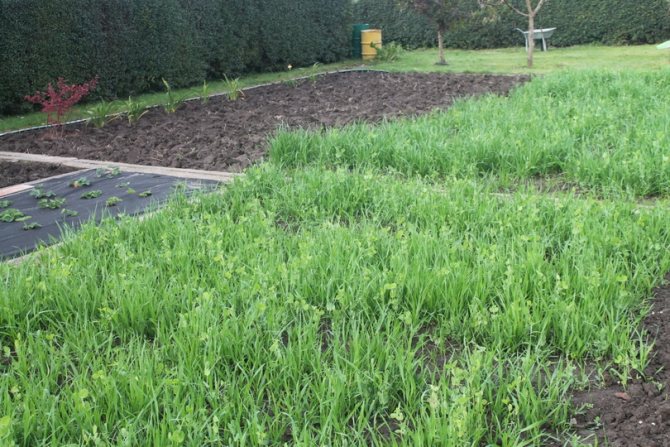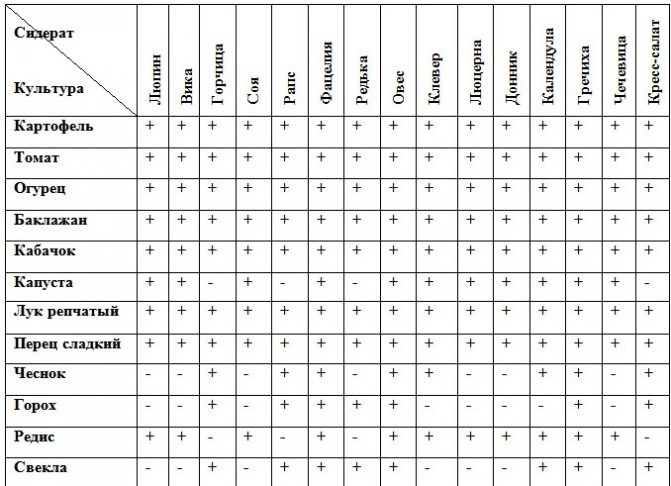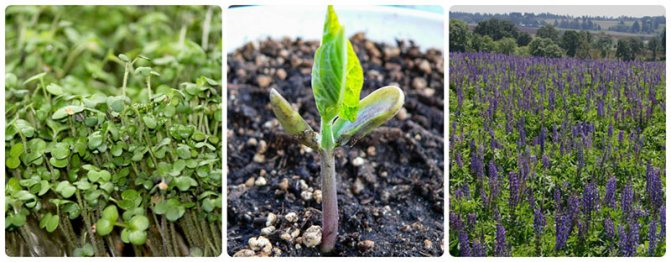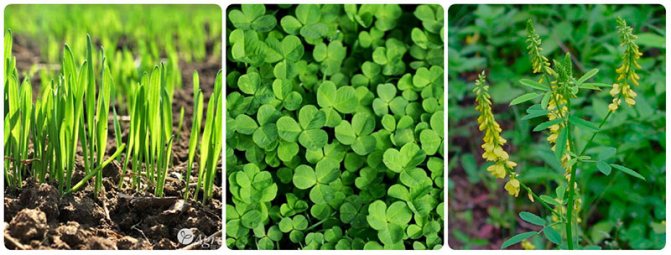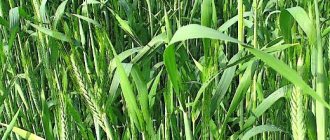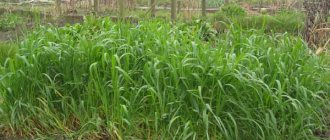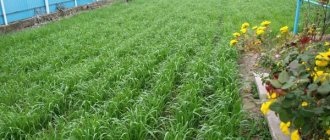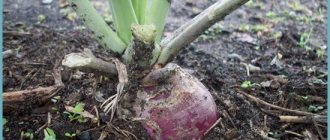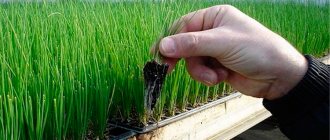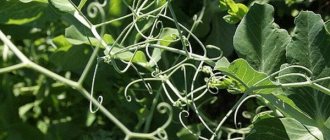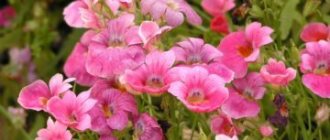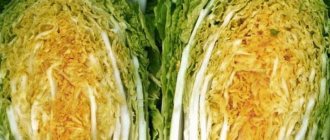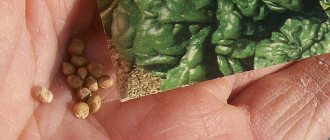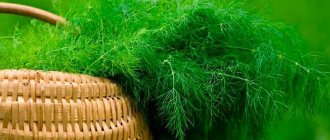Siderates have ceased to be the prerogative of advanced landowners and have firmly taken their place in ordinary private farms. A grandmother-summer resident or a novice vegetable grower no longer needs to be convinced of the need to sow so-called green fertilizers in order to simultaneously enrich the land with nutrients and drive pests out of the soil. And for those who are just planning to start growing vegetables and fruits on their own plot, we offer detailed information about the exceptional benefits of green manure plants.
Why grow green manure
Siderata are green fertilizers that are grown with the aim of restoring the physical condition of the soil after the summer cottage and gardening season, improving its fertility and enriching it with nitrogen and microelements.
This name comes from the Latin word "sidera", which almost literally means "a star receiving power from the sky." There is something vital in this definition that justifies its purpose.
The most important function of siderates:
- improvement and restoration of the mechanical and chemical composition of the soil,
- additional supply of its nutrients.
Siderata are considered to be plants that rapidly gain leafy green mass, specially grown to improve and restore the soil and enrichment with nitrogen and various micro- and macroelements. This method of soil fertilization makes it possible to minimize the use of expensive mineral fertilizers and pesticides. Replacing them with green manure is an economical and environmentally friendly approach.
Pros of growing green manure:
- quickly and deeply developing root system loosen the soil well, thereby significantly improving the water and air permeability of the soil;
- create unfavorable conditions for the growth and spread of weeds;
- supply the soil with humus and all the necessary macronutrients: nitrogen, potassium and phosphorus, which are not washed out either by autumn rains or by thawed spring snow in spring;
- are reliable protection against soil erosion, blowing in winter and erosion in spring;
- with their smell and bright color they attract beneficial insectivorous animals (toads, ground beetles) to the beds, providing them with food;
- subject to the observance of crop rotation, they significantly reduce the number of harmful pathogens: pests and diseases;
- green manure plants, as fertilizers, during the autumn sowing period can increase the yield of vegetables by one and a half, or even more times.
In terms of efficiency, a single application of green manure plants is equivalent to the introduction of 2-3 kg / m² of manure.
Which to choose
Mustard
If you have not yet decided which green manures are the best for the garden, pay attention to mustard. White mustard makes the soil loose and saturated with organic matter, inhibits the growth of weeds, and protects the garden from wireworms.
The length of the plant root reaches 1 m. After the greens are cut off in 2 weeks, the root system rotts, resulting in a multi-channel system that allows moisture and oxygen to be delivered to a greater depth.
Sowing is carried out in the fall - after the garden is cleaned and the harvest is harvested. Can be sown in spring, 30 days before planting potatoes, for example.

Phacelia
The plant saturates the soil with organic matter and acts as a baking powder. Phacelia grows in any soil and is not afraid of any climatic disasters. Moreover, it can be sown several times during the season.
Due to the fact that a large amount of nutrients accumulates in the soil, it is possible to do without additional fertilizers altogether. Perhaps this information will help you figure out what is better as a siderat - phacelia or mustard.
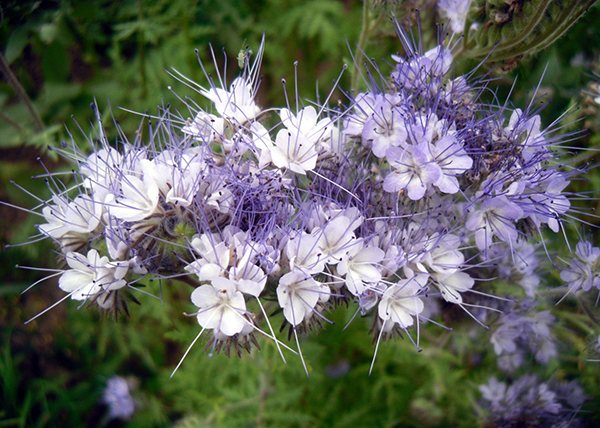

Oats
For growth, oats do not "disdain" any kind of soil. The main thing is that it is well moisturized. When it blooms, it does not tolerate heat well. During the period of milky ripeness it does not tolerate cold. Sowing is carried out in late March - early April. Use the plant to prepare the soil for various crops and to enrich it with nitrogen, potassium and other organic matter.
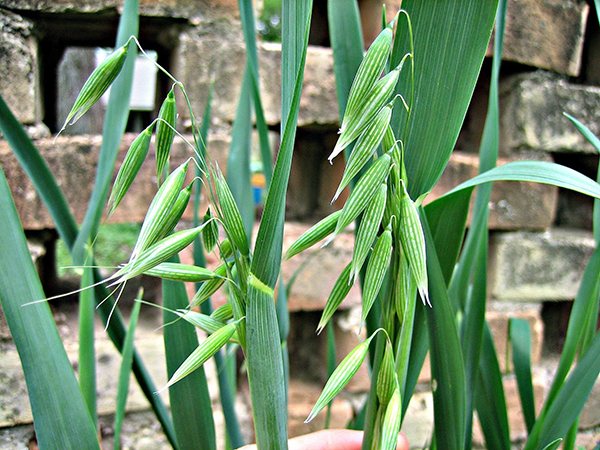

Lupine
Sowing lupine gives a good effect on sandy and podzolic soils with a high acidity coefficient. As a result, the soil is enriched and becomes fertile. The plant can even recycle hard-to-reach soil elements. After its cultivation, excellent conditions for garden strawberries are created.
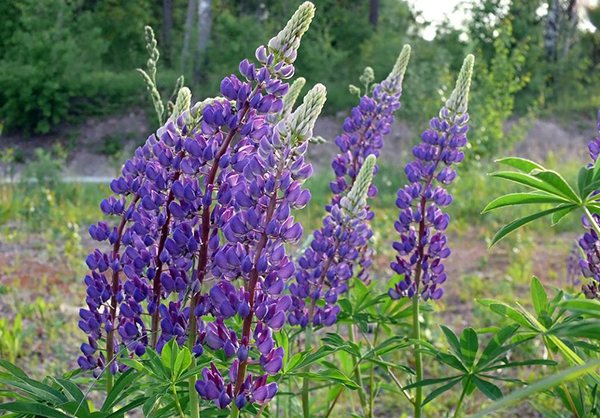

Clover
This plant saturates the soil with nitrogen. The culture is hardy and attracts bees. Clover is sown in areas where the soil is well moistened. The plant can be sown in beds between main crops. One sowing is enough for the clover to grow for three years.
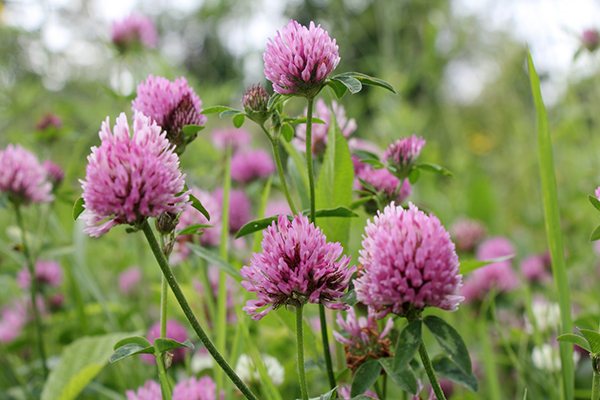

Donnik
Melilot belongs to the legume family and has the ability to accumulate nitrogen in the soil, and also improves the internal structure of the soil. This plant grows well during drought and is also frost-resistant. Melilot is grown on clay and sandy soils. Acidic and highly moistened soil is unfavorable for growth.
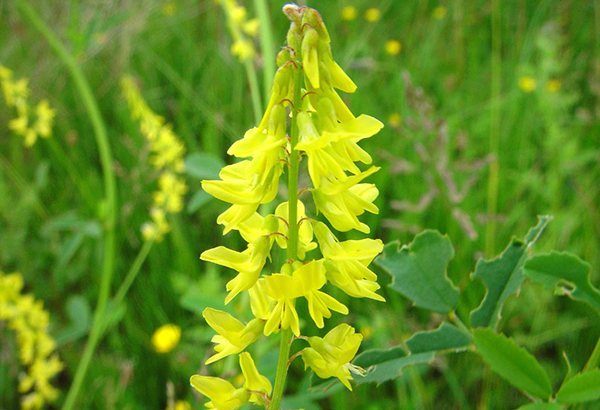

Rules for growing green manure
There are certain rules for choosing, sowing and growing green manure plants.
1. Green manure crops planted in autumn do not need to be mowed or plowed.
By winter, properly sown crops will form a lush foliage system and a soft, non-lignified stem before reaching the seed formation phase. Such plants will lie on the ground, covering it from all adverse influences, and will gradually rot and overheat, fertilizing the soil and restoring its structure. In the spring, all that remains is to scoop up plant residues and remove from the site until a certain time, when the need for them again arises.
2. For these purposes, mainly annual crops are grown, less often perennial legumes.
The selected green manure culture should form a well-developed leaf apparatus in a short time.
3. When choosing a future green fertilizer, it is important to observe the crop rotation.
It is categorically impossible to alternate green manure and subsequent garden plants belonging to the same family, otherwise this will lead to an accelerated accumulation of harmful pathogens: insect pests and diseases. In this case, you should not expect a good harvest.
4. Leave time between planting green manure and sowing the main crop
It is important to know that the process of decomposition of green fertilizer for a certain period can inhibit, even suppress the growth of the main garden plants. Therefore, a waiting period of at least two weeks is required between seeding and sowing vegetables.
Pros and cons of landing
You can evaluate the benefits of green manure crops by their useful properties:
- the use of nursery plants for soil healing is a natural process, which indicates safety;
- restoration of fertility and improvement of the structure occurs in just a few months (before the decomposition of the green mass);
- preventing the formation of erosion;
- the form of fertilization is acceptable for microorganisms living in the soil;
- green manure suppress the growth of weeds;
- deeply penetrating root system of crops makes the soil loose, thereby increasing its air and moisture permeability;
- grown green manures are simply dug up on the site, there is no need to collect them, carry them, distribute them over the garden;
- cultivating the land with green fertilizers cleans up harmful bacteria, spores, larvae of pests and the parasites themselves.
In the discussions of gardeners, there are also negative reviews about the use of green manure plants. For example, when planting a sweet clover, the germination of shoots is observed for several years. This is due to the fact that this culture is perennial, so it will not be possible to remove the grass in one year. Someone considers this to be harmful and prefers annual herbs.
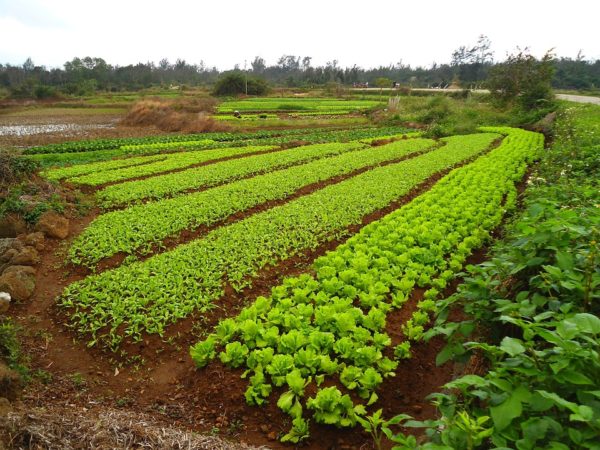

Correctly planted green manure prevents soil erosion
In this case, there is only one recommendation - before sowing, you need to familiarize yourself with the characteristics of the green manure, and only then make a decision on its use.
The disadvantages include the exact observance of the terms of harvesting green mass.
If you hold out until the seeds are formed, you will not be able to get high-quality fertilizer.... The stems are stiff at this stage. Therefore, it is important not to miss the beginning of flowering, when the plant is filled with the maximum amount of micronutrients and retains the delicate structure of the stems and foliage.
Where can green manure be sown
- in the beds
This is usually done in the spring before planting the main planned crop, for example, seedlings. If you decide to sow in the summer, then sow as soon as you have harvested;
- on unoccupied territory
These are usually summer sowing dates. So that the empty area is not clogged with weeds, the best technique in this case will be the placement of green manure, which, in addition to improving the soil composition, will also serve as a disinfecting technique, and will replenish the soil with the necessary nutrients;
- in aisles
This method of sideration is the most optimal and useful. This technique will protect the beds from shedding when carrying out agricultural techniques and unfavorable weather conditions. In addition, it will serve as an excellent protection against weeds, diseases and pests. Dense vegetative is a great, healthy mulch after cutting. It is mainly used for spring sowing. The main thing here is not to be late in mowing and cutting these plants, otherwise they can shade the main crops, which can cause a decrease in their yield.
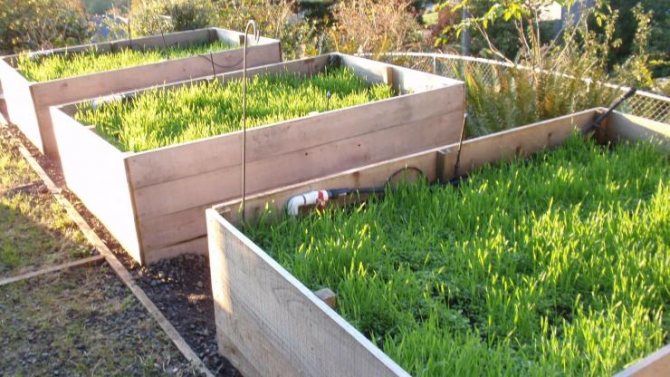

Photo: siderata in the beds
When to sow green manure
When sowing green manure, two methods are usually used:
1. In grooves 7-8 cm deep, where seeds are sown evenly.
2. Seeds are evenly scattered over the ground, avoiding bald spots, lightly sprinkled with earth, slapped with a shovel, or mulched. A sufficient planting density should be ensured - about 2 kg of seeds per hundred square meters.
When is it preferable to sow green manure?
The timing may be different:
- in the first half of summer after harvesting early ripening crops;
- in autumn, as soon as the beds are cleared of the main crops;
- in the spring before the start of the main garden work.
| Traditionally, the preferred sowing dates are autumn and spring. |
Sowing green manure in autumn
The disadvantage of autumn siderates is that snails and slugs are ideally hiding under a dense green shelter, which is not so easy to get rid of later. So, do not let this process take its course. Control is important here.
Sowing dates
The timing of sowing seeds for green fertilizer depends on the resistance of green manure crops to cold. The most appropriate time would be about a month and a half before frost.
| The most favorable terms for sowing green manure in autumn is the end of August-September |
In the fall, it is worth using every day before frost for the earliest possible autumn sowing, since future seedlings should not only emerge, but also take root.
- First of all, it is necessary to completely harvest the crop and clean it of plant residues.
- Next, the site is cultivated or dug up, if necessary, watered.
- The seeds of the future green fertilizer are evenly scattered and covered with earth shallowly, or simply slammed with a shovel or rake.
- Winter crops can be simply mulched with straw.
What to sow in autumn
Crops for autumn sowing periods for green fertilizer are quite cold-resistant, with the exception, perhaps, of buckwheat. In addition to winter cereals, the following are suitable for these purposes:
- mustard,
- rye,
- Vika,
- phacelia,
- rape.
With a lack of time after harvesting late-growing crops, winter cereals are irreplaceable (rye and oats) - they are sown late, just before the frosts, and they will grow in the spring.
The seeding rate depends on the crop. Read the instructions on the packaging carefully. For example, phacelia is sown at 100 g per hundred square meters of land.
When to bury
Siderata of the autumn sowing dates are usually not mowed, since the seeds do not have time to ripen yet, and the stems do not yet grow stiff. They will settle down on their own in the beds. It remains only in the spring to remove the remnants of tops from the beds. In case of early flowering of green manure crops, it is necessary to cut off the upper part of the plants and dig up.
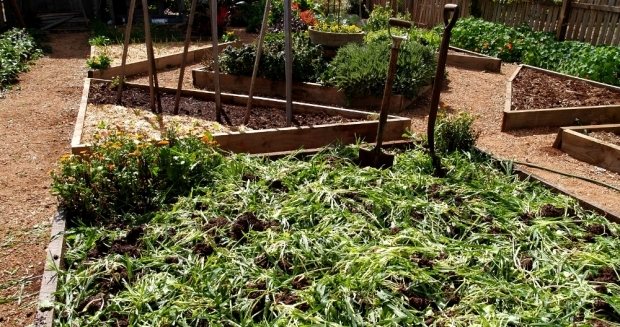

Sowing green manure in spring
The peculiarity of spring green manures is that they grow until the time of planting the main vegetables or potatoes. Unlike autumn fertilizers, spring green fertilizers should be cut and embedded in the soil.
The following methods of embedding spring green manures with the subsequent placement of the main plantings are considered generally recognized:
- Digging the soil with the simultaneous incorporation of green manure and the subsequent planting of vegetable crops. The method is simple, but not effective enough.
- Cut green manure plants with a flat cutter at a certain depth in the soil. The resulting stems are laid on the surface as a mulching material and future fertilizer after decay.
- Green manure plants are left to grow further in the same place with only those changes - to dig holes in the green manure mass, where to place the main vegetables. After 2-3 weeks, the fertilizing plants are cut carefully by hand, leaving only 5 cm from the surface. The cut part is placed right there as mulch, followed by rotting. Such manipulations are done periodically as the green manure grows, up to harvesting. Quite a laborious method, but effective.
Choose for sowing:
- phacelia,
- mustard,
- spring rape,
- Vick.
Sowing green manure in summer
In the summer period, empty areas are usually sown, thereby killing "two birds with one stone": improving the properties of the soil and preventing the spread of weeds.
Summer siderates can also be considered sown in spring, regularly growing after each mowing. Avoid overgrowing such plants. Mow before budding.
It is difficult to recommend any specific green manure. It has been established in practice that the following are considered the best for soil:
- rape,
- oats,
- rye,
- phacelia.
Nevertheless, for each culture, the best way out is to choose your own option, taking into account all the biological properties and requirements.
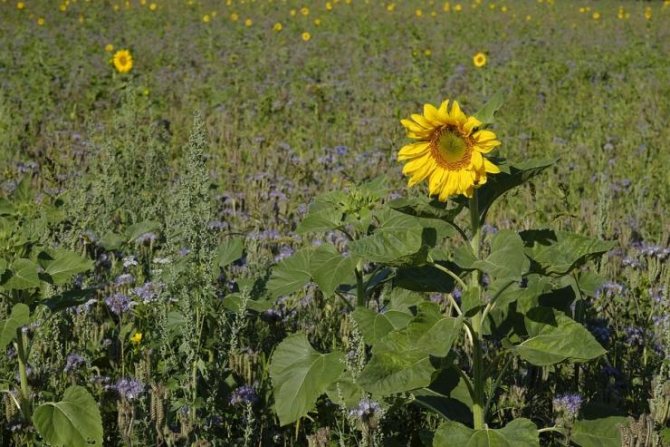

Photo: sunflower and phacelia
How to plant natural fertilizers in autumn
For green manure, it is also important to prepare the soil. Remove all weeds. They will prevent the seedlings from gaining strength, or they may even destroy them. Weed seeds, which have time to ripen before winter, will sprout when warm in the spring and clog the site. If necessary, dig up the beds up to 25 centimeters deep. Water the vegetable garden. Embed the seeds in the soil by 2-4 cm.
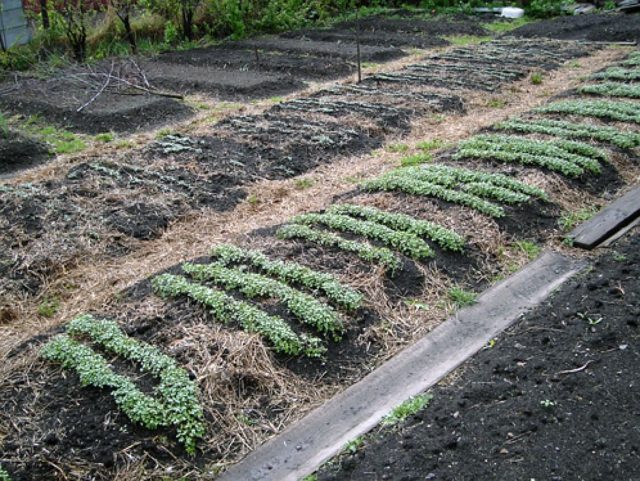

It is just as important for green manure to prepare the soil
When the grass has reached 20 centimeters in height, it is mowed. If flowers appear, do it earlier. If the seeds ripen, then the siderates will sow on their own and become annoying weeds. Dig up the cut grass from the ground. It will rot and saturate the soil with useful trace elements, preparing it for spring planting.
The green manure planted in late autumn is mown in the spring.It is useful to leave them on the surface of the garden for a couple of weeks. In this form, they help their own roots to rot faster.
What green manure to sow: list and names
Green manure crops are not some special new plants, but widely known ones. The following crops are sown as the main types of crops for green manure purposes.
Green manure legumes
After legume siderates, plants that make increased demands on the availability of nitrogen and suffer from nitrogen deficiency feel well and bring the maximum yield.
Legume siderates:
- Vika,
- lupine,
- alfalfa,
- clover,
- peas,
- soybeans are the most relevant crop for us, the Far East.
| The most valuable thing that green manure legumes give to the soil is that they accumulate nitrogen in their roots and saturate the soil with it. |
Lupine
Differs in good protective properties from nematodes, as well as from potato scab and root rot. After this green fertilizer, the best conditions are created for growing various vegetables, especially root crops.
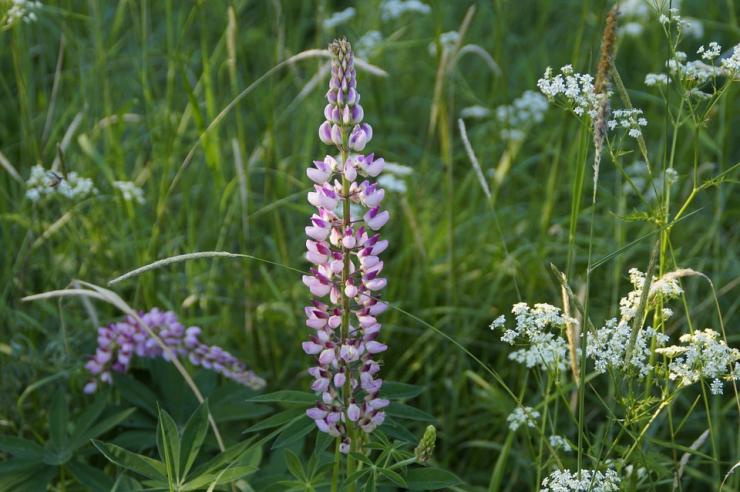

Photo: lupine
Vika
Like all its relatives in the family, it is the main source of nitrogen. It successfully fights weeds in difficult areas. Protects potato crops from slugs and snails. It is better to sow in autumn. A good predecessor for many garden crops, especially cabbage, it shows itself well before placing seedlings in this area. Vika does not like acidic dry soils.
| IMPORTANT Vetch secretes a special chemical that prevents small seeds from germinating. Sow the seeds 1 month apart after the vetch is embedded in the soil. |
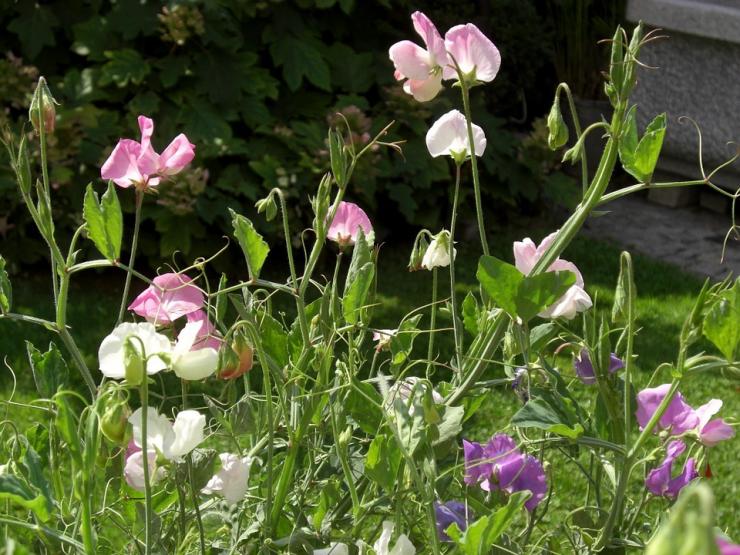

Green manure cereals
Almost all cultivated species serve as excellent fertilizers in the phase of growing leaves:
- wheat,
- oats,
- barley,
- rye.
As a result, the yield of potatoes, various melons and cucumbers is significantly increased.
Rye
- serves as an excellent orderly, clearing the occupied soil from carriers of fungal diseases and nematodes. In addition to organic matter, it also gives the earth potassium with nitrogen. Perfectly displaces weeds from its territory, while loosening the soil with a well-developed root system. Rye is frost-resistant, unpretentious to the composition and structure of the soil. After it, good yields are given by potatoes, cucumbers, tomatoes.
Disadvantage: this cereal has powerful roots that can only be developed by mechanized methods. A shovel and a rake are not helpers here.
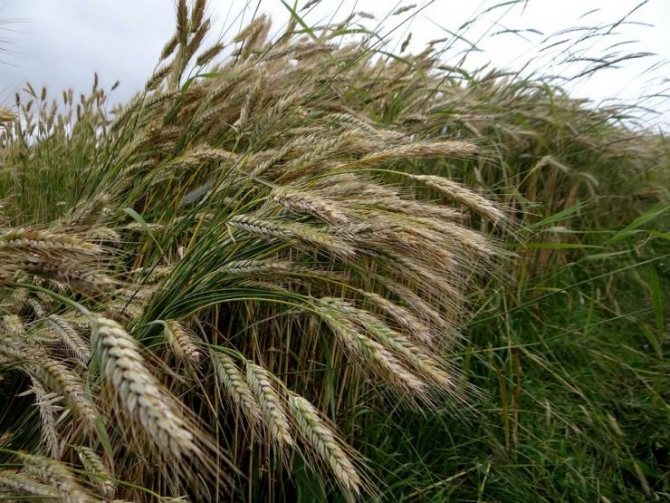

Photo: rye
Wheat
- in addition to its main function - the accumulation and enrichment of soil with organic matter, during decomposition, it releases a significant amount of essential macronutrients: nitrogen and potassium.
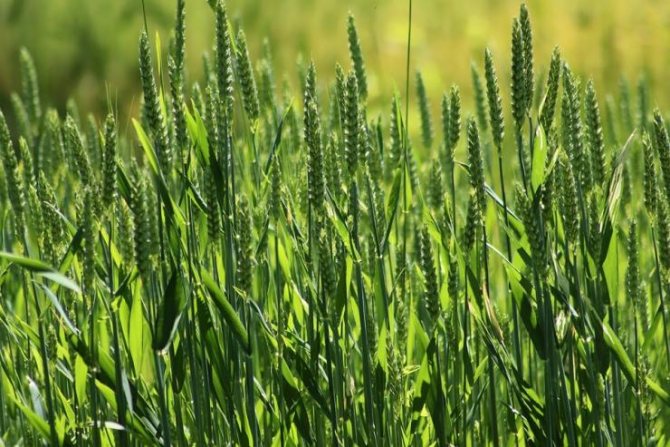

Photo: wheat
Oats
It is widely known for its ability to loosen even very hard soil with a powerful, well-developed root system. This significantly improves the flow of air and water into the inner soil layers, thereby significantly reducing the development of root rot. The roots of this cereal contain a substance that helps to suppress pathogens of root rot and other diseases, both bacterial and fungal in nature.
Oats have certain properties of the root system - strengthening, thereby protecting dry light soils from erosion and blowing. The preferred dates for sowing oats for fertilization will be April, or a sub-winter period.
| It is believed that oats are much more effective when mixed with vetch or rye. |
- An important condition for the good growth of this cereal is the covering of the sown seeds with soil up to 2.5 cm.
- Cut spring shoots together with the roots should be left for a month to rot, and later plowed.
- Areas with regular moisture are preferred.
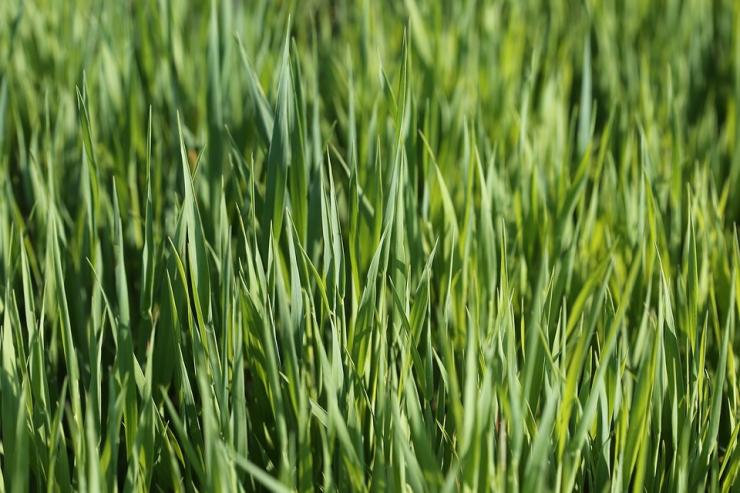

Cruciferous green manure crops
It is not advisable to place all cruciferous green manure plants on future plantings of cabbage vegetables.
Mustard
It is very popular with summer residents. The rapidly growing green part of the plant successfully fights weeds, drowning their growth and almost completely clearing the site for future plantings.Organic acids secreted by the roots of this plant, when interacting with the soil through complex chemical reactions, lead to the replenishment of potassium reserves.
With its sulfuric root secretions, mustard scares away the bear, larvae of various beetles and other insects, pests of our plantings, incl. dangerous pest - wireworm.
Confirmed by experienced summer residents its effectiveness in the prevention of late blight, fusarium and scab. Thanks to this, it has found the widest use in the beds before planting vegetable nightshades and potatoes.
Mustard grows even at -5 ° C. Sow about 150 g per one hundred square meters.
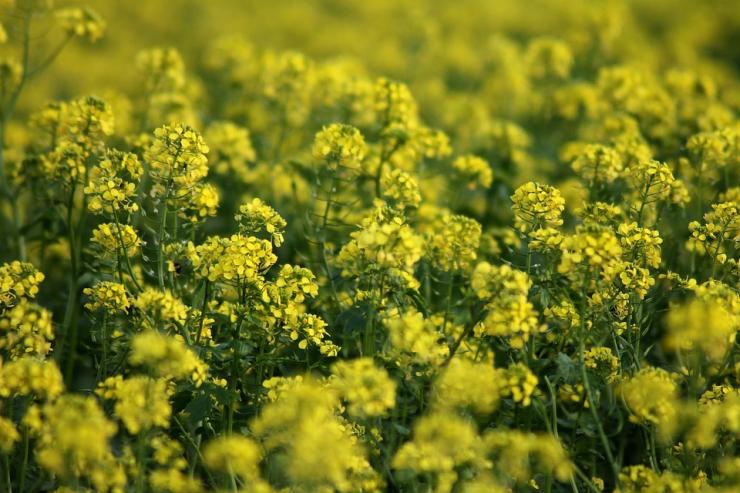

Photo: mustard
Rapeseed (spring and winter)
It is a good healer for the soil, perfectly heals it, at the same time it also enriches it with organic matter, serves as a source of phosphorus and sulfur.
- Demanding on soils: prefers clay and loamy.
- Avoid lumpy areas - the main breeding grounds for slugs that feed on young rapeseed seedlings.
- Sowing it should not be delayed due to the small size of the seeds. It is usually worth sowing in August.
There are regions where the cultivation of winter green manures is not practiced due to special unfavorable conditions in winter. Such territories include the Khabarovsk Territory, deprived of the snowy winters necessary for overwintering seedlings.
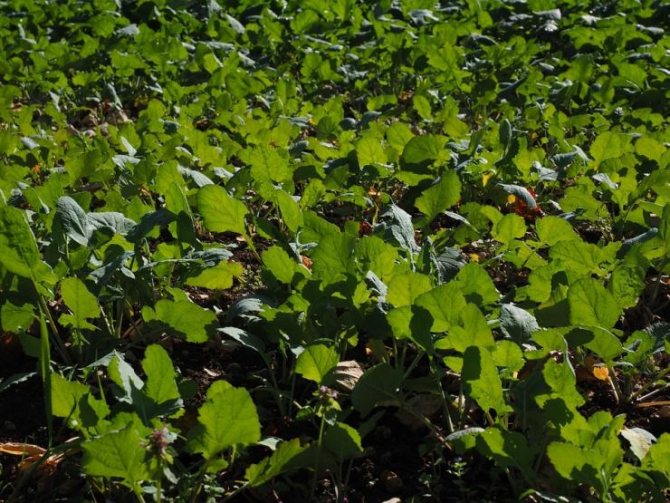

Photo: winter rape

